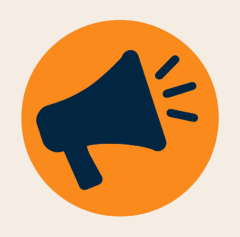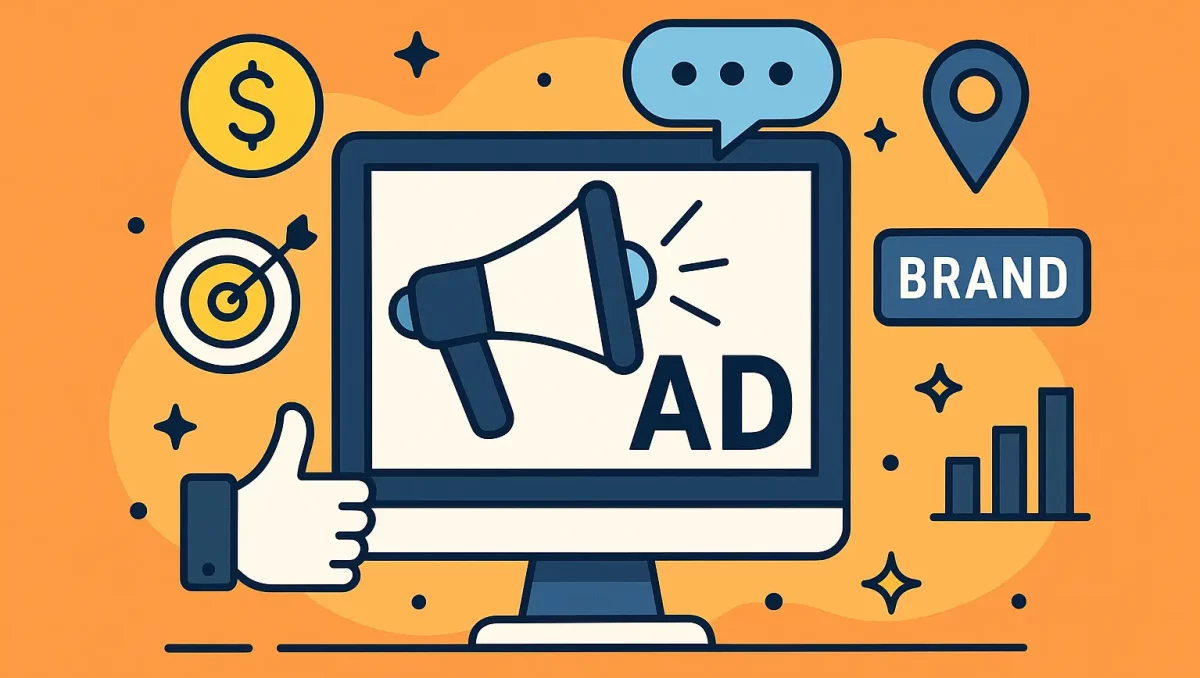I’m Kayla. I run ads from a tiny desk by my kitchen window. My coffee gets cold. My cat sits on my keyboard. And guess what? I still hit targets. Most days.
Curious about the full play-by-play? I broke it all down in this recap of when I tried remote advertising jobs—it’s the unfiltered version with extra screenshots and takeaways.
This is my honest take on remote advertising work—what I did, what I loved, what made me want to scream, and how I made it pay my bills.
How I Got My First Remote Gig
I didn’t start fancy. I made one short case study in Canva. One page. Before-and-after numbers. A few screenshots from Google Ads and Meta Ads Manager. That little deck did more than my long resume ever did.
I found my first remote job through LinkedIn, then a second one from We Work Remotely. Later, I picked up contract work through Upwork and MarketerHire. I’m not special. I just sent simple notes like, “Here’s a result I got for a brand like yours. Happy to show the account.” People wrote back.
Quick note: I never do unpaid “trial weeks.” A small paid test? Sure. A free week? No way.
Real Work I Did (With Real Numbers)
I’ll keep it short and clear. Three jobs, three stories.
-
DTC skincare brand (Meta + TikTok): We spent about $30k that month. I tested 12 hooks, all short UGC-style clips. Two won. Cost per sale went from $38 to $24. Their ROAS moved from about 1.4 to 2.3. We tracked with GA4 and a simple Looker Studio report. I also kept a scrappy “ad graveyard” folder in Dropbox—everything that lost, so we didn’t repeat it.
-
B2B SaaS (LinkedIn + retargeting on Meta): Budget was around $12k. Goal: $120 per demo lead. We ended at $98. Not huge, but steady. We pushed case-study ads with real quotes and headshots. HubSpot said 35% of those leads moved to sales calls. The key? Plain copy. No jargon wall.
-
Local pizza chain (Google Ads): $3k spend. We set tight radius targeting and used call tracking with CallRail. Calls went up about 40% in six weeks. Sunday football nights were wild. I even wrote a “2 pies + wings” promo line that beat all the long stuff.
For those wondering about expanding into streaming and OTT placements, I also ran ads on Peacock—the CPMs and audience quality were eye-opening.
Honestly, wins feel good. But I miss a lot too. One TikTok ad with a funny hook bombed hard. I thought it would soar. It fell flat. That’s the job.
If you ever pitch a dating-app client, product insight matters as much as creative testing. A quick primer I found helpful is this in-depth Zoosk review—it lays out the app’s features, user demographics, and pricing tiers so you can craft hooks that speak directly to what singles actually care about.
Similarly, when you’re tasked with ads for adult-oriented nightlife or escort services—industries that live or die by reputation—nothing beats eavesdropping on actual user reviews. A gold-mine thread I’ve referenced is Erotic Monkey Salina where unfiltered client commentary surfaces the experiences, safety cues, and price points that resonate—perfect fodder for compliant copy angles that still convert.
A Day in My Remote Life
- Morning checks: Pacing, spend, CPA/ROAS, and any weird spikes. Quick notes in Google Sheets.
- Slack standup: Short update. I keep it real—what’s working, what’s not.
- Creative block: I write five headline ideas, three body lines, and one visual note. Fast and messy.
- Lunch walk: Brain reset. If I skip it, I get cranky.
- Build and test: New ad sets, bids, audiences. One small test at a time, not ten.
- Report: Tiny wins go in a shared doc. Friday gets a neat one-pager with charts from Looker Studio.
Some days I get flow. Some days it’s just… noise. I try to land one clear win before 3 p.m. Even a tiny one. If you ever need a quick refresher on keeping a solid routine, Remote Work Best Practices: 11 Tips for Success offers a tight checklist that pairs well with the daily grind above.
The Good Stuff
- No commute. My shoes thank me.
- Deep work time. Headphones on. Creative ideas hit more.
- Flexible hours. I can catch a school play or a dentist slot.
- Wide talent pool. I work with a designer in Manila and an editor in Toronto. It… just works.
The Tough Stuff
- Lonely. Slack is not a hug.
- Time zones. I’ve done calls at 6 a.m. and 9 p.m. Same week.
- Tracking drama. iOS changes made me pull hair. I learned to check MER and not only ROAS.
- Disapprovals. Meta zapped three ads during Black Friday week. I sat there with tea and stress.
Oh, and once my Wi-Fi dropped mid-client demo. I tethered to my phone and kept going. Not smooth. But we closed the call.
Tools I Use (And Why)
- Meta Ads Manager, Google Ads, TikTok Ads, LinkedIn Campaign Manager: The core.
- GA4 + Looker Studio: Clean weekly charts. Clients like pictures.
- Sheets: Fast notes, pacing math, simple cohort tabs.
- Slack + Asana: Keep tasks tight. Short names, clear dates.
- Figma or Canva: Light creative tweaks and quick mockups.
- CapCut: Speedy edits for UGC clips.
- CallRail: For local clients who care about the phone, not clicks.
I also learned a ton about navigating Google’s stricter policy minefields—if you’re in the wellness space, my deep dive on how I actually advertise supplements on Google (what worked, what flopped) will save you some gray hairs.
I keep a “Test Plan” doc. One hypothesis per line. “Short hook beats long copy for cold traffic.” Did it win? Keep. Did it lose? Kill it. Simple.
How I Find Remote Advertising Jobs Now
- I search LinkedIn using words like “paid media,” “performance marketer,” “media buyer,” “remote.”
- I keep a small portfolio: three case studies only. No fluff. A short story, a chart, a lesson.
- I send a 60-second Loom walking through one ad account view. No secret sauce. Just clear thinking.
I also browse HuntMads for curated remote advertising roles—it's surprisingly focused and saves me time. If you want extra industry-specific pointers, 15 Best Practices for Remote Workers in the Digital Marketing Industry breaks down habits that keep performance pros sharp.
If a posting says “we need viral,” no budget, no data, and wants you to fix months of mess “fast”—that’s a pass from me.
Pay, Hours, and Real Talk
- My contract rates ran from $45 to $85 per hour. Longer gigs paid better.
- Full-time roles I saw ranged from about $70k to $120k, sometimes more with senior titles.
- Busy seasons: Q4 holidays, back-to-school, big sales weeks.
- Slow seasons: January can feel sleepy. I plan for that.
I block two focus windows a day. One in the morning. One late afternoon. Meetings live between them. If I don’t guard time, the work turns mushy.
A Crunch Story: Black Friday
We had a gift brand on Meta. Spend jumped 3x for the week. On day two, a hero ad got flagged. Zero warning. I used a backup video (same product, different angle), swapped headline to “Gift-ready in 2 days,” and brought CPR back down within hours. It wasn’t pretty. It worked. I slept like a rock.
Who Thrives In This Work?
- You like numbers, but you also like people.
- You can write tight copy and ask plain questions.
- You can test small. You can wait. You can kill your favorite ad when the data says so.
If you hate tracking and you need loud office buzz to feel alive, this may feel rough.
Quick Bits I Get Asked
- How many ads to test? I start with 3–5 per audience, not 20.
- Video length? Under 20 seconds wins a lot for cold traffic. Not always, but often.
- What’s a “good” ROAS? Depends on margins. I ask for target CPA or MER first.
- How soon can you scale? If I see steady wins for a week, I nudge spend 10–20%. Not more.
My Tiny Starter Kit
- One-page case study
- A test

